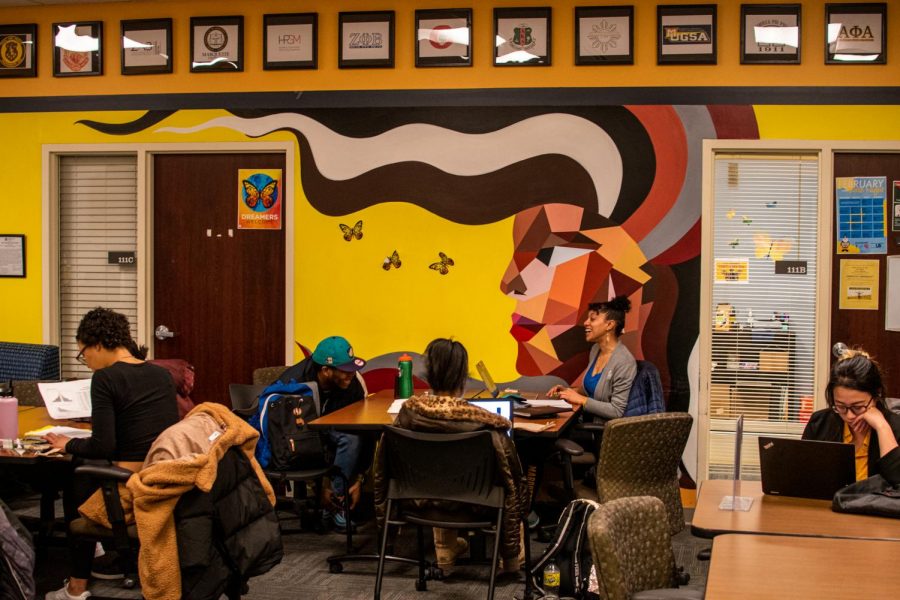Segregation: noun; the separation or isolation of a race, class, or ethnic group by enforced or voluntary residence in a restricted area, by barriers to social intercourse, by separate educational facilities or by other discriminatory means.
Milwaukee is among the top ten most segregated cities, targeting minority groups, in the United States, according to 2020 data from the University of California, Berkeley.
Recently in 2022, Milwaukee educational attainment reveals that those who identify as Hispanic have a high school graduation rate of 62.22%, but only a bachelor’s rate of 9.31%. Compared to the white population, which has a 93.60% graduation rate and a 39.73% bachelor’s rate.
Emerging Hispanic Serving Institute status, also known as Emerging HSI status, is given to an institution that contains the minimum of 15% of undergraduates who identify as Hispanic or Latinx. During the fall, Marquette received “emerging HSI” status.
Recruitment of Hispanic students is only one part of the HSI initiative. Retention is also an important factor.
“We are very interested in creating an inclusive campus environment in which all of our diverse stakeholders can thrive,” Jacki Black, director for Hispanic Initiatives and Diversity & Inclusion Educational Programming, says.
“I have a primary responsibility for the Hispanic-Serving Institution initiative and campus-wide educational programs devoted to creating a more inclusive learning and working environment, but my work spans across many different aspects of diversity and inclusion,” Black says.
In addition to supporting underrepresented faculty and staff, that means “supporting academic programs and research agendas that respond to student needs and engage with pressing social issues and bolstering programs and practices that have a direct, positive influence on the student experience.”
Black continues, “When I started in fall of 2016, there was already a thriving Latinx community on campus, including Latinx student organizations, support through the Office of Engagement and Inclusion (formerly the Center for Intercultural Engagement), and other formal and informal programs… we are poised in the near future to get to that 25% threshold.”
According to Summary of Progress at Marquette regarding student diversity, “Latinx undergraduate enrollment increased dramatically between fall 2016 (10.6%) and fall 2021 (15.3%). Underrepresented minority (URM) students now make up 29% of the undergraduate body. Latinx grad student enrollment grew from 5.9% to 8.9% over the same period. The first-year undergrad class entering in fall 2021 is 17.6% Latinx and 33.6% URM.”
Student support now gives students of color access to RISE pre-orientation programming and mentoring, group sessions at Orientation, and more support for student organizations and activities through the Office of Engagement and Inclusion. There are also Latinx organizations such as Latin American Student Organization (LASO), Hispanic Professionals of Greater Milwaukee (HPGM), Paso a Paso, Ballet Folklorico and other activities that represent and celebrate the community.
This also includes the new faculty protocols to ensure more diversity as well, resulting in the percentage of faculty of color going from 13.4% to 16.9%, Latinx faculty more than tripled from 18% to 57%. These progressions are a step-up to HSI, but as Black mentioned, these numbers and percentages are a fragment of the overall goal.
Jared Tejeda, a freshman commuter who identifies as Hispanic, voiced his opinion about the emerging HSI status and its sufficiency. “I believe a lot of Hispanic families, at least around Wisconsin, have financial issues and that would in turn give them problems enrolling in the university. Thanks to Marquette, more and more Hispanics and Latinxs can enroll in the university without the worry of finances, and they can pursue their future career. I think it certainly is enough, but I wouldn’t mind seeing more ways to incentivize Hispanics to feel welcome at Marquette.”
He further voiced that “Future students should also know to reach out to staff members, who are very welcoming from my experience, in case they feel violated or if they have any suggestions for how to celebrate their culture or feel more welcome to the university.”
Marquette University and Cristo Rey Jesuit High School of Milwaukee (CRJ) have a partnership that allows students to get a grasp on what to expect with college applications and the college experience through their corporate partnership and involvement with programs. This includes Encuentros, which is a program specifically for Latinx first-generation junior and senior students that would like to speak to Marquette undergraduate students who have similar experiences and receive information about resources that the students and their families would benefit from.
Cristo Rey Jesuit High School Seniors Ailed Martinez-Morales, Anthony (Tony) Gomez and Nancy Reyes have been accepted and will soon attend Marquette in the fall this year. Each have said what they expect from Marquette and how they became interested to attend. Martinez-Morales voiced how she would like to receive support as an incoming Hispanic student and would like to see more representation when admitting students.
Similarly, to their peer, Gomez and Reyes have expressed their desire for a first-generation student support group and the ability to be with other minority students.
“I hope Marquette continues their great rep I hope that in the future they’re more inclusive and use they use status as an asset and to help those who look like me” Martinez Morales says.
They furthermore conveyed their appreciation for Marquette’s emerging HSI status and the efforts to inch towards a more diverse campus.
“Marquette has a good way of representing themselves as a unique university, that’s what makes them stand out to Hispanics and Jesuits, many people will look into it because of that,” Gomez says.
There is a lot more work that needs to be done towards a diverse community for Hispanic and Latinx students and faculty. The emerging HSI status is only the beginning towards a greater goal for the University to accomplish.
This story was written by Christina Espinoza. She can be reached at [email protected]




